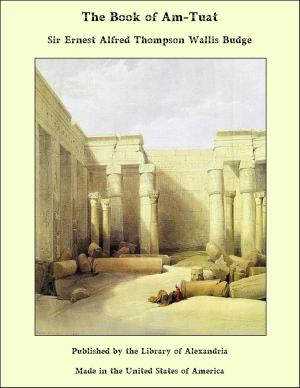Earth Features and Their Meaning: An Introduction to Geology for the Student and the General Reader
Nonfiction, Religion & Spirituality, New Age, History, Fiction & Literature| Author: | William Herbert Hobbs | ISBN: | 9781465606327 |
| Publisher: | Library of Alexandria | Publication: | March 8, 2015 |
| Imprint: | Language: | English |
| Author: | William Herbert Hobbs |
| ISBN: | 9781465606327 |
| Publisher: | Library of Alexandria |
| Publication: | March 8, 2015 |
| Imprint: | |
| Language: | English |
The series of readings contained in the present volume give in somewhat expanded form the substance of a course of illustrated lectures which has now for several years been delivered each semester at the University of Michigan. The keynote of the course may be found in the dominant characteristics of the different earth features and the geological processes which have been betrayed in the shaping of them. Such a geological examination of landscape is replete with fascinating revelations, and it lends to the study of Nature a deep meaning which cannot but enhance the enjoyment of her varied aspects. That there is a real place for such a cultural study of geology within the University is believed to be shown by the increasing number of students who have elected the work. Even more than in former years the American travels afar by car or steamship, and the earth’s surface features in all their manifold diversity are thus one after the other unrolled before him. The thousands who each year cross the Atlantic to roam over European countries may by historical, literary, or artistic studies prepare themselves to derive an exquisite pleasure as they visit places identified with past achievement of one form or another. Yet the Channel coast, the gorge of the Rhine, the glaciers of Switzerland, and the wild scenery of Norway or Scotland have each their fascinating story to tell of a history far more remote and varied. To read this history, the runic characters in which it is written must first of all be mastered; for in every landscape there are strong individual lines of character such as the pen artist would skillfully extract for an outline sketch. Such character profiles are often many times repeated in each landscape, and in them we have a key to the historical record. An object of the present readings has thus been to enable the student to himself pick out in each landscape these more significant lines and so read directly from Nature. In the landscapes which have been represented, the aim has been to draw as far as possible upon localities well known to travelers and likely to be visited, either because of their historical interest or their purely scenic attractions. It should thus be possible for a tourist in America or Europe to pursue his landscape studies whenever he sets out upon his travels. The better to aid him in this endeavor, some suggestions concerning the itinerary of journeys have been supplied in an appendix. Regarded as a textbook of geology, the present work offers some departures from existing examples. Though it has been customary to combine in a single text historical with dynamical and structural geology, a tendency has already become apparent to treat the historical division apart from the others. Again, a desire to treat the science of geology comprehensively has led some authors into including so many subjects as to render their texts unnecessarily encyclopedic and correspondingly uninteresting to the general reader. It is the author’s belief that there is a real need for a book which may be read intelligently by the general public, and it must be recognized that the beginner in the subject cannot cover the entire field by a single course of readings. The present work has, therefore, been prepared with a view to selecting for study those dominant geological processes which are best illustrated by features in northern North America and Europe. It is this desire to illustrate the readings by travels afield, which accounts for the prominence given to the subject of glaciation; for the larger number of colleges and universities in both America and Europe are surrounded by the heavy accumulations that have resulted from former glaciations.
The series of readings contained in the present volume give in somewhat expanded form the substance of a course of illustrated lectures which has now for several years been delivered each semester at the University of Michigan. The keynote of the course may be found in the dominant characteristics of the different earth features and the geological processes which have been betrayed in the shaping of them. Such a geological examination of landscape is replete with fascinating revelations, and it lends to the study of Nature a deep meaning which cannot but enhance the enjoyment of her varied aspects. That there is a real place for such a cultural study of geology within the University is believed to be shown by the increasing number of students who have elected the work. Even more than in former years the American travels afar by car or steamship, and the earth’s surface features in all their manifold diversity are thus one after the other unrolled before him. The thousands who each year cross the Atlantic to roam over European countries may by historical, literary, or artistic studies prepare themselves to derive an exquisite pleasure as they visit places identified with past achievement of one form or another. Yet the Channel coast, the gorge of the Rhine, the glaciers of Switzerland, and the wild scenery of Norway or Scotland have each their fascinating story to tell of a history far more remote and varied. To read this history, the runic characters in which it is written must first of all be mastered; for in every landscape there are strong individual lines of character such as the pen artist would skillfully extract for an outline sketch. Such character profiles are often many times repeated in each landscape, and in them we have a key to the historical record. An object of the present readings has thus been to enable the student to himself pick out in each landscape these more significant lines and so read directly from Nature. In the landscapes which have been represented, the aim has been to draw as far as possible upon localities well known to travelers and likely to be visited, either because of their historical interest or their purely scenic attractions. It should thus be possible for a tourist in America or Europe to pursue his landscape studies whenever he sets out upon his travels. The better to aid him in this endeavor, some suggestions concerning the itinerary of journeys have been supplied in an appendix. Regarded as a textbook of geology, the present work offers some departures from existing examples. Though it has been customary to combine in a single text historical with dynamical and structural geology, a tendency has already become apparent to treat the historical division apart from the others. Again, a desire to treat the science of geology comprehensively has led some authors into including so many subjects as to render their texts unnecessarily encyclopedic and correspondingly uninteresting to the general reader. It is the author’s belief that there is a real need for a book which may be read intelligently by the general public, and it must be recognized that the beginner in the subject cannot cover the entire field by a single course of readings. The present work has, therefore, been prepared with a view to selecting for study those dominant geological processes which are best illustrated by features in northern North America and Europe. It is this desire to illustrate the readings by travels afield, which accounts for the prominence given to the subject of glaciation; for the larger number of colleges and universities in both America and Europe are surrounded by the heavy accumulations that have resulted from former glaciations.















